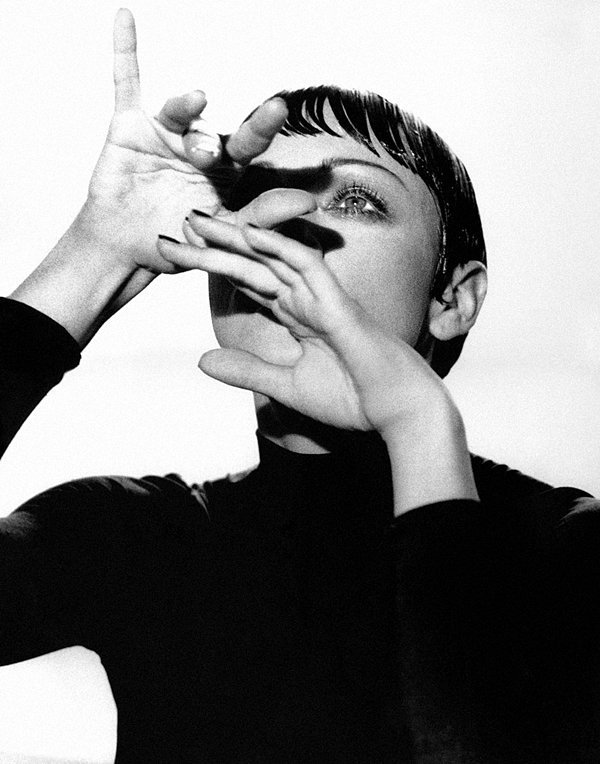While there have been a number of game-changing photographers over the course of the twentieth century–from Guy Bourdin to Richard Avedon–perhaps no other one had such an “art sensibility” than (what is now) Poland-born Peter Lindbergh. Hatched at a time when his country was occupied by Germans during World War II, it seemed as though Lindbergh was born to run, which he quickly did upon enrolling in the Berlin Academy of Fine Arts and realizing he was better off learning about art by following in the footsteps of his ultimate inspiration, Vincent Van Gogh. So it was that he hitchhiked to Arles. Spending a few months there, Lindbergh would while away another two years traveling down to Morocco via Spain. Somewhere along the trajectory of this early and mid-twenties vision quest, Lindbergh must have been imbued with the proverbial “eye of the photographer,” which responds most willingly to beauty rather than decay, the latter aesthetic being basically all that his hometown–and Germany–had to offer.
After returning to Germany and engaging in a brief foray into studying abstract art, Lindbergh transitioned into photography at the dawn of the 1970s. Assisting Hans Lux for about two years, it didn’t take long for Lindbergh to open his own studio in 1973. As his reputation began to gain momentum, he joined the likes of Helmut Newton in photographing regularly for Stern magazine (before the “Hitler diaries” hoax, luckily).
His fondness for black and white–the stark contrast that it could reveal in a person–was at its most prominent on a commercial level when he first photographed Naomi Campbell, Linda Evangelista, Tatjana Patitz, Christy Turlington and Cindy Crawford for British Vogue’s January 1990 cover. While initially amenable to color, Lindbergh decided against it when he viewed it as yet another way to market false perfection, one of his chief aphorisms regarding photography being, “This should be the responsibility of photographers today: to free women, and finally everyone, from the terror of youth and perfection.” Of course, it was rather difficult to make that quintet look anything less than perfect and, resultantly, it was this iconic photo that would single-handedly be responsible for giving birth to George Michael’s “Freedom ‘90” video (yet another thing we can thank Lindbergh for).
As the 90s wore on, Lindbergh’s skill for capturing the vulnerability of even the most seemingly “flawless” of humans became all the more sought after in every magazine from Harper’s Bazaar to Interview. His gift for honesty in glamor would even beckon the Wall Street Journal in the 2010s (specifically an image of Angelina Jolie). Of course, it was nothing if not slightly ironic that a man who idolized Vincent Van Gogh should find himself one of the most beloved photographers of major celebrities and supermodels. For, surely, Van Gogh would have shirked that sort of thing in favor of his prized Arles landscapes. Even so, Lindbergh remained faithful to his hero in alternating residences between Paris, Arles and New York.
He would also remain loyal to the magazine cover that launched him as an American household name (granted, probably only in gay households) by reuniting some of the group from his famous British Vogue cover in 2015. A brief documentary of behind the scenes footage called The Reunion was released to mark the event, with Cindy Crawford explaining his talent for capturing women of all ages at their most beautiful as follows: “He loves women… he [also] really sees the beauty in a mature woman. Through [her] experience–having children, through heartbreaks, through love. Peter thinks all of that adds to our beauty.” And no, he didn’t even have to be gay to do it (leaving behind his widow, Petra Sedlaczek, who he married in 2002)–perhaps proving once again that to have any sensitivity as a straight man one needs to be European? Whatever the root of his empathetic artistry, it’s possible that we have none other than Van Gogh to look to for begetting this rare breed of fashion photography that set an entirely new precedent for cutting away from the superficial. Oh that young “artists” still looked to classic works of art for their inspiration so that we might not watch the worlds of fashion, music and film digress at such alarming rates. Let us at least hope that Lindbergh will be one of the classics that future generations of photographers turn to as an influence.






















